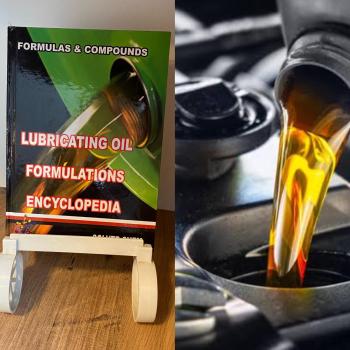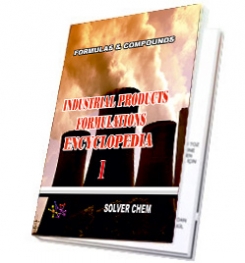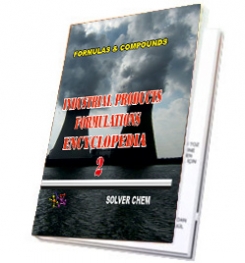
Base stocks are called by several names: Neutrals (SN100, SN150, 6SN650) Bright Stocks, Grades (SAE 5, 10…; ISO 22, 32..).
The most common names are for group I (SN: Solvent Neutral), for group II (N: Neutrals) and group III grade names refer to the viscosity (4cst, 6cst, 8cst …).
|
Group |
Viscosity Index |
Saturates |
Sulphur in % |
Description |
|
I |
80-120 |
< 90% |
> 0.03% |
Conventional (Solvents) |
|
II |
80-120 |
= 90% |
= 0.03% |
Requires Hydro-processing |
|
III |
>120 |
= 90% |
= 0.03% |
Requires severe Hydro-processing, PolyAlphaOlefins (PAO) |
|
IV |
--- |
All other basestocks |
IV - including other synthetics |
|
Note that the base oil group category is followed by the manufacturing method and then a description of the oil characteristics for each category.
There are five specific categories of base oils. These categories define the type of base stock the oil is formulated from. The categories are as follows..
Group I - Solvent Freezing: Group 1 base oils are the least refined of all the groups. They are usually a mix of different hydrocarbon chains with little or no uniformity. While some automotive oils on the market use Group I stocks, they are generally used in less demanding applications (hh).
Group II - Hydro processing and Refining: Group II base oils are common in mineral based motor oils currently available on the market. They have fair to good performance in lubricating properties such as volatility, oxidative stability and flash/fire points. They have only fair performance in areas such as pour point, cold crank viscosity and extreme pressure wear (hh).
Group III - Hydro processing and Refining: Group III base oils are subjected to the highest level of mineral oil refining of the base oil groups. Although they are not chemically engineered, they offer good performance in a wide range of attributes as well as good molecular uniformity and stability. They are commonly mixed with additives and marketed as synthetic or semi-synthetic products. Group III base oils have become more common in America in the last decade.
Group IV -Chemical Reactions: Group IV base oils are chemically engineered synthetic base stocks.
Poly Alpha Olefins (PAO's) are a common example of a synthetic base stock. Synthetics, when combined with additives, offer excellent performance over a wide range of lubricating properties. They have very stable chemical compositions and highly uniform molecular chains. Group IV base oils are becoming more common in synthetic and synthetic-blend products for automotive and industrial applications
Group V - As Indicated: Group V base oils are used primarily in the creation of oil additives. Esters and polyolesters are both common Group V base oils used in the formulation of oil additives. Group V oils are generally not used as base oils themselves, but add beneficial properties to other base oils (hh).
Note that the additives referred to in the Group V description are not aftermarket type oil additives. The additives referred to are used in the chemical engineering and blending of motor oils and other lubricating oils by the specific oil company that produces the finished product.
Production Flow Chart
• Feedstock is separated into distillates and vacuum gas oils
• Vacuum gas oil is sent through the hydro-cracker for conversion
• To saturate the molecules and remove impurities such as nitrogen, sulfur, oxygen and heavy metals, Hydrogen is introduced.
• Under extreme temperature and pressure in the presence of a catalyst, hydro-cracking converts aromatics molecules into saturated Paraffin.
• This process yields stock with lighter in color since the absence of contaminants.
• Long waxy paraffin molecules are restructured into shorter ones , so-Paraffin that resist gelling and improve low temperature pump-ability.
• Hydrogen is introduced again to clean up the remaining and impurities thus enhancing the oxidation and thermal stability of the final product.
VIRGIN BAES OIL PRODUCT SPECIFICATIONS
|
Test |
Units |
Methods |
150 SN |
500 SN |
|
Density |
@ 15 °C |
ASTM-D 4052 |
|
|
|
Colour |
- Max |
ASTM-D 1500 |
1 |
2 |
|
Flash Point COC |
- Min°C |
ASTM-D 92 |
210 |
227 |
|
Flash Point PMCC |
- Min°C |
ASTM-D 93 |
200+ |
210+ |
|
Furfural Content |
- Max |
PPMM- 1414 |
5 |
5 |
|
Pour Point |
- Max°C |
ASTM-D 97 |
-12 |
-6 |
|
Viscosity @ 40 °C |
Cst |
ASTM-D 445 |
28/31 |
91/101 |
|
Viscosity @ 100 °C |
Cst |
ASTM-D 445 |
- |
- |
|
Viscosity Index |
- Min |
ASTM-D 2270 |
95 |
95 |
|
Carbon Residue |
- MaxWT % |
ASTM-D 189 |
- |
0.1 |
|
Sulfer Content |
- Max WT% |
ASTM-D 4294 |
0.6 |
1 |
|
Neutralization No |
- MaxMG KOH/GM |
ASTM-D 664 |
0.05 |
0.05 |
|
Copper Strip Corrosion |
- Max100 °C/3 Hrs |
ASTM-D 130 |
1A |
1A |
|
Ash- Max |
WT % |
ASTM-D 482 |
0.01 |
0.01 |
|
Appearence |
- |
Visual |
C&B |
C&B |
SPECIFICATION- RE-REFINED ( Recycled ) BASE OIL
|
S.NO
|
PARAMETERS |
SN-150-UF |
SN-300-UF |
Test Method |
|
1 |
Appearance |
Light Viscous |
Medium Viscous |
Visual |
|
2 |
Colour |
5.5 -6.0 |
5.5 -6.0 |
ASTM -D 1500 |
|
3 |
Density at 15 deg C |
0.86 - 0.88 |
0.87 -0.89 |
ASTM -D 1298 |
|
4 |
Viscosity at 40 deg C, Cst |
28 - 32 |
46-50 |
ASTM -D 445 |
|
5 |
Flash point, Deg C, Min |
139 |
201 |
ASTM -D 92 |
|
6 |
Total Acid Number, mg KOH/g |
< 0.05 |
< 0.05 |
ASTM -D 664 |
|
7 |
Crackle Test/Moisture |
Negative |
Negative |
- |
|
8 |
Pour Point. Deg C max |
-6 |
-6 |
ASTM -D 97 |
|
9 |
Copper Strip Corrossion, max |
1 |
1 |
ASTM -D 130 |
|
10 |
Conradson Carbon Residue, % w/w |
<0.5 |
<0.5 |
ASTM -D 189 |
|
11 |
Ash Content,% w/w |
0.01 |
0.01 |
ASTM -D 482 |
|
12 |
Sulphur Content, % w/w |
< 1.5 |
< 1.5 |
ASTM -D 4927 |
Comparison of Virgin and Re-Refined (Recycled) Base Oil
|
BASE OIL SN500 |
Virgin |
Recycled |
Standard |
|
Viscosity Index |
90 |
100 |
ASTM D 2270 |
|
Flash Point deg C |
230 min |
215 |
ASTM D 92 |
|
Pour Ponit deg C |
-6 |
-3 |
ASTM D 97 |
|
Kinematic Viscosity @ 40 deg C CST |
100 |
100 |
ASTM D445 |
|
Kinematic Viscosity @ 100 deg C CST |
11 |
10.5 |
ASTM D445 |
|
Density at 15 deg C KG/L |
0.885 |
0.88 |
ASTM D 4052 |
|
Color |
2.5 max |
4 to 6 |
ASTM D 1500 |
TAGS : WHAT IS BASE OILS,USING OF BASE OILS,BASE OILS TYPES,BASE OILS MSDS,WHERE TO USE BASE OILS,FORMULAS OF GREASE OILS,FORMULATION OF LUBRICANTS,LUBRICANTS MANUFACTURING PROCESS,PRODUCTION MOTOR OILS,MAKING MOTOR OILS,USE BASE OILS IN MOTOR OILS.FORMULAS OF BASE OIL,HEAVY NEUTRAL BASE OIL MAKING,LIGHT NEUTRAL BASE OIL USING,FORMULA,FORMULAS,MANUFACTURING BASE OIL.
SOLVER CHEM

|
|

|
|

|
|

